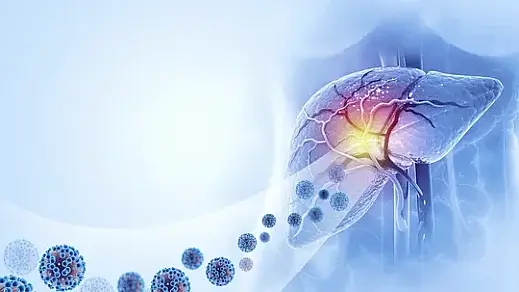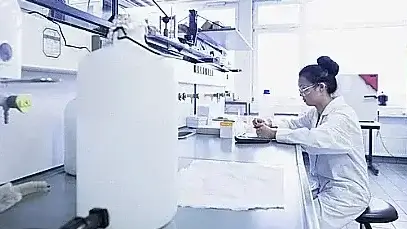The Role of Environmental Pollutants in Liver Health

How Environmental Toxins Impact Liver Function
Environmental pollutants play a significant role in influencing liver health. As the liver is the primary organ responsible for detoxification, it is uniquely vulnerable to damage from pollutants. These substances, including pesticides, heavy metals, and industrial chemicals, can interfere with liver function by inducing oxidative stress, inflammation, and cellular injury. The role of environmental pollutants in liver health is gaining recognition, as research highlights their contribution to conditions such as non-alcoholic fatty liver disease (NAFLD), fibrosis, and even liver cancer.
Key Pollutants Affecting Liver Health
Understanding the types of pollutants that most affect the liver is critical for prevention and management. Among the most impactful are:
Persistent Organic Pollutants (POPs)
POPs, such as polychlorinated biphenyls (PCBs) and dioxins, are long-lasting chemicals used in industrial and agricultural applications. These compounds accumulate in the environment and enter the human body through contaminated food or water. POPs disrupt lipid metabolism and contribute to the accumulation of fat in liver cells, a hallmark of NAFLD.
Heavy Metals
Exposure to heavy metals like lead, mercury, and cadmium is linked to liver toxicity. These metals generate reactive oxygen species (ROS), leading to oxidative damage and impaired liver enzyme activity. Chronic exposure can exacerbate liver fibrosis and increase the risk of hepatocellular carcinoma. More information can be found in the ATSDR Toxic Substances Portal.
Volatile Organic Compounds (VOCs)
VOCs, commonly found in solvents, paints, and cleaning products, are another group of environmental toxins with hepatotoxic potential. These chemicals can impair liver detoxification pathways, resulting in increased susceptibility to liver disease.
Mechanisms of Liver Damage from Pollutants
The liver's role in processing and eliminating toxins makes it a primary target for pollutant-induced damage. The mechanisms by which pollutants affect liver health include:
Oxidative Stress
Pollutants can generate excessive ROS, overwhelming the liver’s antioxidant defenses. This oxidative stress damages cellular components such as lipids, proteins, and DNA, ultimately impairing liver function.
Inflammation
Chronic exposure to environmental toxins triggers an inflammatory response in the liver. This inflammation can progress to fibrosis, characterized by excessive scar tissue formation, which hampers the liver’s regenerative capacity.
Disruption of Metabolic Pathways
Many pollutants interfere with the liver’s metabolic pathways. For instance, POPs disrupt lipid metabolism, leading to the accumulation of fat in liver cells. Heavy metals impair mitochondrial function, reducing the liver’s energy production and detoxification efficiency.
Pathways of Liver Damage from Environmental Pollutants
Who Is at Risk?
Certain populations are more vulnerable to the hepatotoxic effects of environmental pollutants. These include:
Industrial Workers
Individuals working in industries involving chemicals, metals, or solvents are at higher risk due to occupational exposure.
Urban Residents
People living in urban areas are exposed to higher levels of air pollutants and VOCs, increasing their risk of liver damage.
Vulnerable Populations
Children, pregnant women, and individuals with pre-existing liver conditions are particularly susceptible to the harmful effects of environmental toxins.
Prevention and Mitigation Strategies
While it is impossible to eliminate all exposure to environmental pollutants, several strategies can minimize their impact on liver health:
Reducing Exposure
Limiting contact with known pollutants is essential. For example, using air purifiers and avoiding high-pollution areas can reduce exposure to airborne toxins. Choosing organic produce can also lower intake of pesticide residues.
Enhancing Detoxification
Supporting the liver’s detoxification processes through a healthy diet and lifestyle is beneficial. Foods rich in antioxidants, such as leafy greens and berries, help combat oxidative stress. Adequate hydration and regular exercise further support detoxification.
Advocacy and Regulation
Stronger environmental policies and regulations are critical to reducing pollutant exposure. Advocacy for stricter controls on industrial emissions and pesticide use can lead to improved public health outcomes.
Clinical Implications
Healthcare providers must remain vigilant in recognizing the potential impact of environmental toxins on liver health. Assessing patients’ occupational and environmental exposures should become a routine part of medical evaluations. Additionally, public health initiatives aimed at raising awareness of these risks are crucial.
Current Research and Future Directions
Emerging studies continue to shed light on the link between environmental pollutants and liver disease. For instance, research on the gut-liver axis suggests that pollutants may alter gut microbiota, exacerbating liver inflammation. Advances in biomarkers for pollutant exposure and liver damage will enhance early detection and intervention strategies.
Conclusion
The role of environmental pollutants in liver health is an area of growing concern. As our understanding of these interactions deepens, it becomes increasingly clear that minimizing exposure to harmful substances is essential for preventing liver disease. By combining individual efforts with broader regulatory measures, we can protect liver health and improve overall well-being.
Share this article

Dr. Alinda Mae Gordola, MD
I am a board-certified internist and gastroenterologist specializing in the diagnosis and treatment of digestive system disorders. See Full Bio.
-
1. Méndez-Sánchez N, et al. Global multi-stakeholder endorsement of the MAFLD definition. Lancet Gastroenterol Hepatol, 2022.
-
2. Tilg H, Moschen AR. Mechanisms behind the link between environmental pollutants and NAFLD. Nature Reviews Gastroenterology & Hepatology, 2021.
-
3. Ibrahim SH, et al. Environmental toxin exposure and liver disease. Hepatology, 2020.
-
4. Cave M, et al. Toxicant-associated steatohepatitis. Clinics in Liver Disease, 2019.
-
5. Zelber-Sagi S, et al. Nutritional strategies for environmental toxin mitigation in liver health. Journal of Hepatology, 2021.
-
6. Kim WR, et al. Heavy metals and hepatotoxicity: clinical insights. Liver International, 2020.
The Importance of Regular Check-Ups for Liver Health in Children The importance of regular check-ups for liver health in children represents a...
Daily Water Intake Calculator Water is often overlooked as a powerful tool in managing and preventing fatty liver disease, yet it plays a crucial role in...
Diagnosing Fatty Liver Disease in Pediatric Patients Diagnosing fatty liver disease in pediatric patients has become a critical focus for healthcare providers...

You might enjoy more articles by
Dr. Alinda Mae Gordola, MD
 Disease
Disease Diets
Diets Recipes
Recipes Supplements
Supplements Management
Management Calculators
Calculators Quizzes
Quizzes Glossary
Glossary




